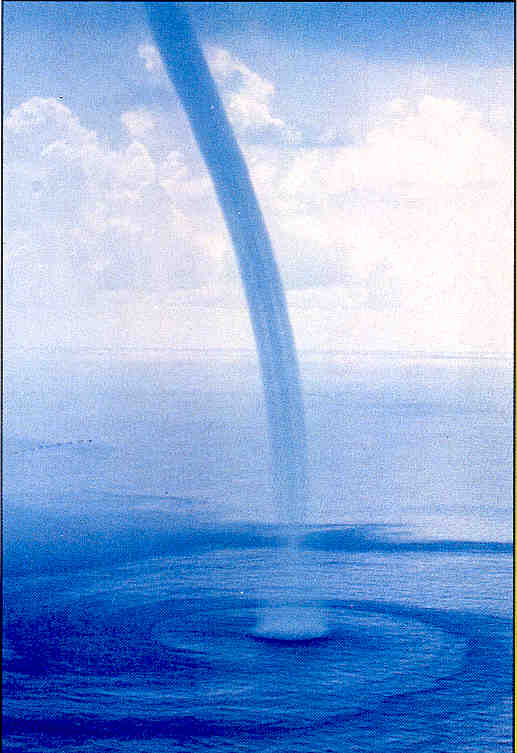
A few severe thunderstorms capable of producing large hail and gusty winds will be possible this afternoon and evening across northwest Texas. Dry conditions and gusty winds will persist across southern Colorado today. Read More >
About Waterspouts Waterspouts are similar to tornadoes over water. Waterspouts are generally broken into two categories: fair weather waterspouts and tornadic waterspouts. Tornadic waterspouts are simply tornadoes that form over water, or move from land to water. They have the same characteristics as a land tornado. They are associated with severe thunderstorms, and are often accompanied by high winds and seas, large hail, and frequent dangerous lightning. Fair Weather waterspouts are usually a less dangerous phenomena, but common over South Florida’s coastal waters from late spring to early fall. The term fair weather comes from the fact that this type of waterspout forms during fair and relatively calm weather, often during the early to mid morning and sometimes during the late afternoon. Fair weather waterspouts usually form along dark flat bases of a line of developing cumulus clouds. This type of waterspout is generally not associated with thunderstorms whereas tornadic waterspouts develop in severe thunderstorms. Tornadic waterspouts develop downward in a thunderstorm while a fair weather waterspout begins to develop on the surface of the water and works its way upward. By the time the funnel is visible, a fair weather waterspout is near maturity. Fair weather waterspouts form in light wind conditions so they normally move little. If a waterspout moves onshore, the National Weather Service issues a tornado warning as some of them can cause significant damages and injuries to people. Typically, fair weather waterspouts dissipate rapidly when they make landfall, and rarely penetrate far inland. The best way to avoid a waterspout is to move at a 90-degree angle to its apparent movement. Never move closer to investigate a waterspout. Some can be just as dangerous as tornadoes. Waterspout Safety
|